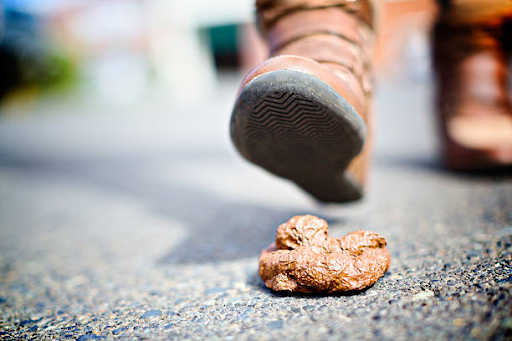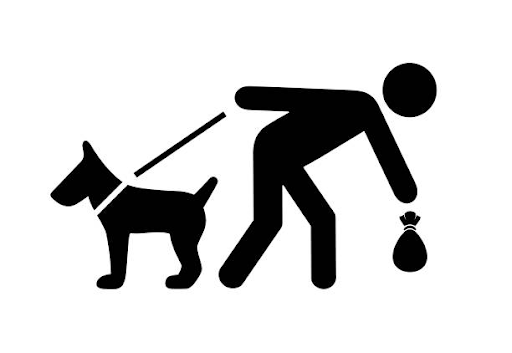Introduction:
Welcome to our blog on the importance of regularly emptying your dog waste container! As responsible pet owners, it's essential to prioritize cleanliness in our surroundings for the well-being of both our furry friends and the environment. Did you know that a single gram of dog waste can contain over 23 million bacteria? Neglecting to regularly empty your dog waste container can lead to a range of health and environmental hazards. Studies have shown that unmanaged dog waste contributes significantly to water pollution and soil contamination. The advantages of keeping the environment clean, useful advice for trash management, and the overall effect on the well-being of your community will all be covered in this blog. Let's dive in and learn more about this crucial aspect of responsible pet ownership.
Health and Environmental Hazards of Neglected Dog Waste Containers
Neglecting to regularly empty your dog waste container can lead to serious health and environmental hazards. Accumulated dog waste in the container becomes a breeding ground for harmful bacteria and pathogens, posing a risk of disease transmission to humans and other animals. Moreover, unattended waste can contaminate water sources and degrade soil quality. The odors and flies attracted to the neglected container further contribute to an unhygienic environment. To address these pinpoints, it is crucial to empty your dog waste container regularly. By doing so, you can reduce the risk of disease, prevent messiness and overflow, and maintain a clean and healthy surrounding for your dog and community.
Their role in responsible pet ownership
Dog waste containers play a vital role in responsible pet ownership, addressing the pinpoints of cleanliness and hygiene. By providing a designated space for disposing of dog waste, these containers help pet owners maintain a clean environment. Neglecting to address the pinpoints can result in health and environmental hazards. Regularly emptying the container is essential to prevent the accumulation of harmful bacteria and pathogens that can spread diseases. It also helps prevent odors and flies, ensuring a pleasant and hygienic space for both pets and their owners. By emptying dog waste containers consistently, responsible pet owners contribute to a healthier and more environmentally friendly community.
Proper techniques for emptying and maintaining dog waste containers
When it comes to managing dog waste, emptying and maintaining the dog waste container is crucial. To address the pinpoints of this process, here are some simple yet effective techniques to follow.
Firstly, always use gloves or protective gear to avoid direct contact with the waste. This helps prevent the spread of bacteria and potential infections. Next, dispose of the waste in designated waste bins or bags, ensuring proper containment. Avoid flushing it down the toilet or leaving it exposed.
Once emptied, it's important to clean and sanitize the container regularly. Use mild detergents or pet-safe disinfectants to eliminate any lingering odors or harmful bacteria.
By following these proper techniques, you can ensure a clean and hygienic environment for your dog and everyone around.

Disposal methods for dog waste
To address the pinpoints of disposing of dog waste properly, here are some simple and effective methods to follow.
Use dedicated waste bags: Always carry waste bags specifically designed for dog waste. These bags are durable, leak-proof, and help contain the waste securely.
Dispose of designated waste bins: Look for dog waste bins or special waste disposal stations in your neighborhood or dog-friendly areas. These bins are equipped to handle dog waste safely.
Home composting (if permitted): If you have a composting system at home, certain types of dog waste can be composted. However, ensure you research and follow local regulations and guidelines.
Remember, proper disposal of dog waste is essential for the environment and the well-being of others. By following these disposal methods, you can contribute to a cleaner and healthier community.
Raising awareness and promoting responsible waste management
Raising awareness about responsible waste management is crucial in addressing the pinpoints associated with dog waste. By educating dog owners about the importance of proper waste disposal, we can create a cleaner and healthier environment for everyone. Responsible waste management includes regularly emptying dog waste containers to prevent the accumulation of bacteria and pathogens. It also helps in reducing odors, flies, and the risk of disease transmission. By encouraging community initiatives and cooperation, we can foster a culture of responsible pet ownership and ensure that our surroundings remain clean and hygienic. Let's work together to make a positive impact and promote responsible waste management.
Encouraging community initiatives and cooperation
To address the pinpoints related to dog waste, it is essential to encourage community initiatives and foster cooperation. By working together, we can create a cleaner and healthier environment for everyone. Engaging the community in responsible waste management practices can make a significant impact. Organizing awareness campaigns, distributing educational materials, and hosting community clean-up events are effective ways to promote responsible waste disposal. By building a sense of collective responsibility, we can ensure that dog owners understand the importance of properly disposing of waste. Let's join hands, support each other, and make our community a cleaner and more sustainable place for all.

Conclusion
In conclusion, regularly emptying your dog waste container is crucial for maintaining a clean and hygienic environment for both your furry friend and the community. By addressing the pinpoints of this important task, you can ensure the health and well-being of everyone involved.
Proper waste management helps prevent the accumulation of harmful bacteria and pathogens, reducing the risk of disease transmission to humans and other animals. It also prevents odors, flies, and overflowing, creating a more pleasant and aesthetically pleasing environment.
To effectively manage dog waste, remember to use protective gloves, choose the right container, and dispose of the waste properly. By raising awareness and promoting responsible waste management, we can foster a cleaner, healthier, and more harmonious community for all.
Frequently Asked Questions (FAQ)
A: Regularly emptying your dog waste container is essential for maintaining cleanliness and hygiene. It helps prevent the buildup of harmful bacteria and pathogens, reducing the risk of disease transmission. Additionally, it prevents odors, flies, and overflowing, ensuring a clean and pleasant environment for both your dog and the community.
A: The frequency of emptying your dog waste container depends on the number of dogs you have and their waste output. As a general guideline, it is recommended to empty the container at least once a week. However, if you notice that the container is reaching its capacity sooner, it is advisable to empty it more frequently to prevent any mess or overflow.
A: A: When disposing of dog waste, it is important to follow local regulations and guidelines. Bag the waste using biodegradable dog waste bags, securely tie the bags, and place them in your regular trash bin. Avoid flushing dog waste down the toilet, as it can contaminate water sources. If your community offers designated dog waste disposal facilities, consider utilizing them for proper waste management.
A: While there are different options available, it is recommended to use a dedicated dog waste container specifically designed for this purpose. These containers typically have features such as odor control, easy access, and secure lids to prevent animals from accessing the waste. Using a designated container helps contain odors and ensures convenient waste disposal.
A: To maintain your dog waste container, regularly clean it with mild soap and water to remove any residue or odor. Avoid using harsh chemicals that may be harmful to the environment. Additionally, consider using biodegradable liners or bags to line the container, which can make cleaning and emptying easier. By keeping the container clean, you ensure a more hygienic and pleasant waste disposal experience.



